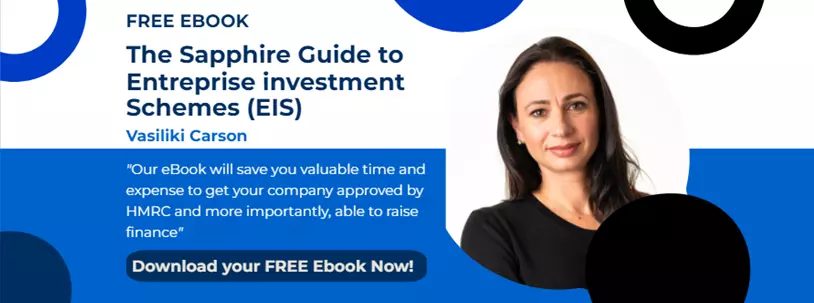
In my experience, raising money for a business is difficult, time-consuming and stressful. As an entrepreneur, you will be torn between keeping your business going and spending considerable amounts of time trying to raise finance. The reality is that raising finance always takes longer than you think (and have budgeted for). Before you approach any potential investors (and that also includes friends and family), you need to make sure you are sufficiently prepared both regarding presentational materials as well as how you have prepared yourself (i.e., you need to be crystal clear on the business idea and know the key numbers etc.).
To help you on your way, here is a list of the five key areas we recommend you have prepared beforehand:
1) Write a well thought out business plan.
Don’t employ someone else (such as an accountant or consultant) to write the plan - it is essential that you spend the time to do it. You have to understand the business and be able to convey the opportunity to the reader. Someone else writing the business plan will not be able to do this for you, as they will never have your passion for the business. All investors know that business plans change, but investors are interested in finding out about the opportunity, what resources are required to get there, the entrepreneurs level of commitment and passion, and understanding all the risks. The business plan does not have to be long or complicated, but just make sure you cover the key points, such as those listed below:
-
Cover page: make it eye-catching (and ensure the plan is dated).
-
Executive summary: provide a one page summary of the opportunity. This could be the only page the investor reads, so put considerable time and effort into the preparation of this page. It is essential to get right.
-
Business overview: provide more details about the business, its history, legal structure, key people etc.
-
Product overview: describe any specific product or project and the related competitive advantage.
-
Markets: provide a description of the market opportunity and the research carried out that backs up the opportunity.
-
Operations: describe how the business will work. Who will run it, where will it be based, e-commerce opportunities etc.?
-
Financials: the historical information as well as projections for the next three to five years, including a balance sheet, profit and loss and cash flow. Details of the funding requirement should be presented and what the money will be spent on.
-
Risks and mitigations: details of the main threats to the business and investors and the proposed mitigations, provide a SWOT analysis etc.
-
Appendix: provide copies of research reports, relevant diagrams or plans etc.
2) Know your key numbers.
Okay, so the numbers will probably change, but you still need to be sure you know what the forecasted numbers are. This includes preparing a detailed profit and loss account, a balance sheet and cash flow. If you do not know the key figures, a potential investor may lose confidence in you (and you only need to watch an episode of BBC’s Dragon’s Den to see how embarrassing and what a deal breaker it is to not to know your numbers). Key figures include your current and forecasted sales, the related costs and resulting profitability. You should also know your historical and projected amounts and the amount of cash you will need going forward (and how long this cash will last).
3) Know how much of your business you are selling.
Be realistic; if you are a startup, with no sales or profits, you will need to give away more equity. If you have a track record of profitability and positive cash flow, you do not have to give away as much ownership.
4) Know the value of your company.
To know how much equity you are selling, you need to have put a value on your company. Companies are valued based on an expectation of future profits. This is a complicated area, and you need to do your homework. As a starting point, you could use the rule of thumb valuation method, by taking your positive cash flow and multiply by four (e.g., if your cash flow were £200,000 per annum the business would be worth circa £800,000). However, the number might not be four for your business sector, so it is best to seek professional advice when valuing your business.
5) Obtain SEIS and EIS advance assurance.
We may be biased (since this is what we do for a living), but we believe both the Seed Enterprise Investment Scheme (SEIS) and the Enterprise Investment Scheme (EIS) are excellent ways to attract investment. If possible, you should obtain advance assurance from HMRC that your business will qualify for both SEIS and EIS. The tax reliefs offered to investors are generous and include the following:
For SEIS qualifying investors, the tax reliefs they may benefit from are as follows:
-
50% income tax relief on amount subscribed (up to a maximum annual investment of £100,000 for the 2018/2019 tax year. Option to carry back to previous tax year providing £100,000 limit for that year has not been exceeded);
-
100% inheritance tax relief after two years (provided the investment is held at the time of death);
-
50% Capital Gains Tax exemption for chargeable gains reinvested (up to the maximum subscribed);
-
100% tax-free growth (provided income tax relief has been given and not withdrawn and disposal takes place after the end of the SEIS three year period);
-
Loss relief (a loss on shares disposed of can be set against an Investor’s income or capital gain to reduce tax); and
-
Business Investment Relief (no taxable remittance for foreign income or gains brought into the UK from offshore for qualifying investments for certain UK resident non-domiciled investors).
For EIS qualifying investors, the tax reliefs they may benefit from are as follows:
-
30% EIS income tax relief on amount subscribed (up to a maximum investment of £1 million for the 2018/2019 tax year. Option to carry back to previous tax year providing £1 million limit for that year has not been exceeded. As announced in the Autumn Budget 2017, for shares issued on or after 6 April 2018, the maximum annual investment limit will increase to £2 million provided that any amount over £1 million is invested in one or more ‘knowledge-intensive’ companies);
-
100% inheritance tax relief after two years (provided the investment is held at the time of death);
-
EIS Capital Gains Tax deferral for the life of the investment on amount subscribed;
-
100% tax-free growth (provided income tax relief has been given and not withdrawn and disposal takes place after the end of the EIS three year period);
-
Loss relief (a loss on shares disposed of can be set against an Investor’s income or capital gain to reduce tax); and
-
Business Investment Relief (no taxable remittance for foreign income or gains brought into the UK from offshore for qualifying investments for certain UK resident non-domiciled investors).
Whether it is your first or your hundred and first time raising money for your business, you will still need to abide by the above suggested steps. By following the above, this should help you be well prepared for any potential investors, as typically, you only get one opportunity to make a good first impression (especially true with investors!).
I wish you all the best in your future fundraising.
Please note that the above is only a condensed summary of SEIS and EIS reliefs and any potential investor and/or company should obtain further details from their own investment or taxation adviser. The value of any tax reliefs will depend on the individual circumstances.
We hope you find the above useful. Please contact us if you need any clarification or help. All our contact details are on our team web page.
 Sapphire Capital Partners LLP is authorised and regulated by the Financial Conduct Authority to conduct investment business.
Sapphire Capital Partners LLP is authorised and regulated by the Financial Conduct Authority to conduct investment business.

